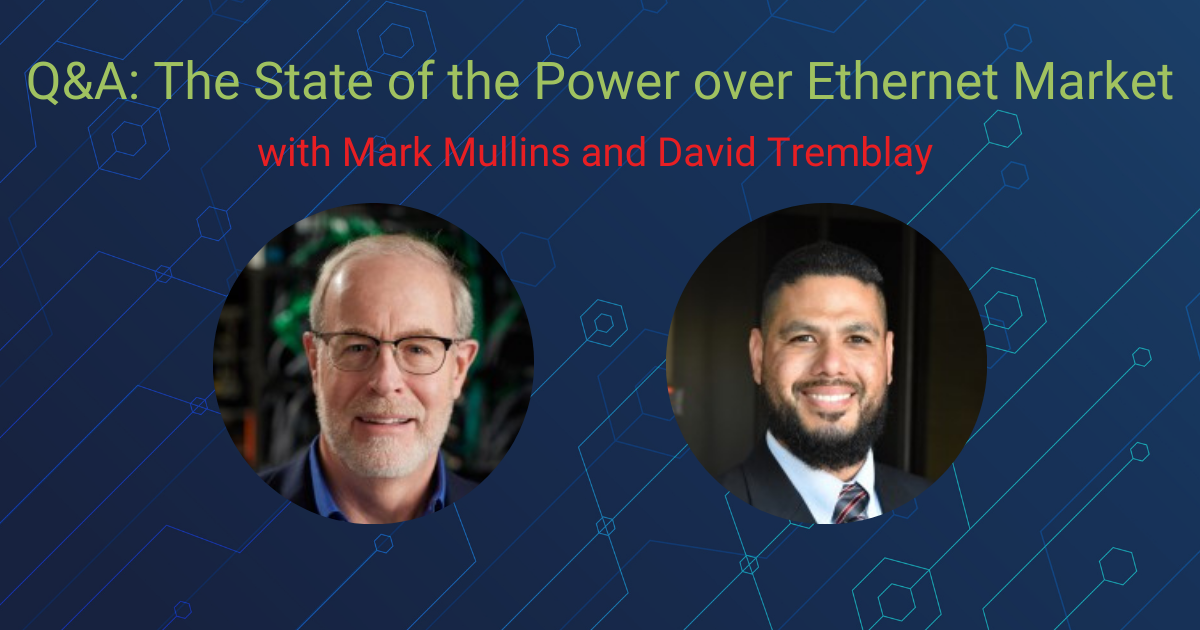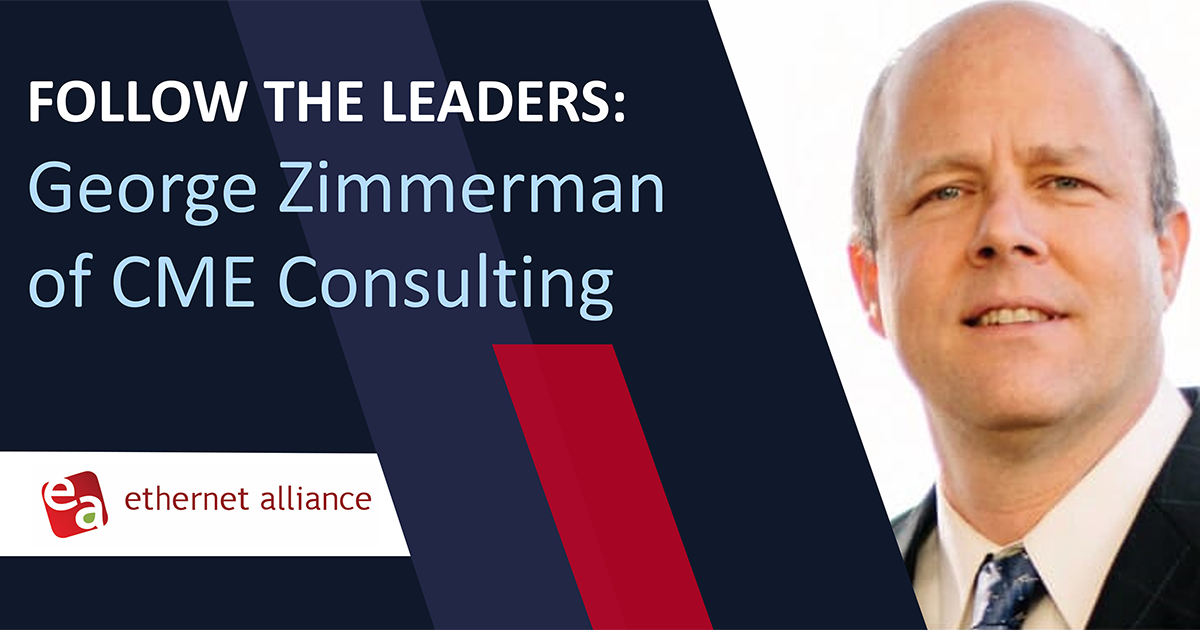Matt Traverso, Ethernet Alliance Board Member
 Matt Traverso, Ethernet Alliance Board Member and Hardware Engineering Manager, Cisco Systems
Matt Traverso, Ethernet Alliance Board Member and Hardware Engineering Manager, Cisco Systems
After years of serving as an active member in Ethernet Alliance activities and events, Matt made the decision to get more involved and join the Ethernet Alliance Board for 2012. His experience as a marketing expert and engineer at fiber optic module manufacturer Opnext Inc. is already being brought to bear in and the IEEE’s 100G Backplane/100G Copper task force and the Ethernet Alliance’s new Next Generation Optics study group. He also serves as an Ethernet Alliance webinar champion and is coordinating the Ethernet Alliance’s presence at the Optical Fiber Conference (OFC) 2013.
Why should companies become members of the Ethernet Alliance?
The Ethernet Alliance is a great venue to build consensus and find common ground outside of the standards process. Oftentimes in the standards process there is a lot of pressure to vote to move forward on an urgent issue. It helps to have an escape valve or additional meeting to help build consensus.
The Ethernet Alliance’s educational efforts are great for members, too. For instance, the University of Ethernet webinar program is a great benefit and ties into one of the things that I am passionate about – trying to get more basic optics knowledge into the hands of the overall user community.
The Ethernet Alliance also provides members with broader exposure to the entire Ethernet ecosystem. If you only look at the particular application you’re servicing, you can miss the big picture. Ethernet today has a broad global footprint – the application footprint has increased from something that sits in an IT person’s rack to something you can find going into cars and service provider networks all over the world. It’s difficult to keep up on all the different applications if you don’t have exposure to other parts of ecosystem.
How is the Ethernet Alliance working to expand the Ethernet ecosystem?
While Ethernet as a whole has its own momentum, what often ends up happening is that as individual companies or organizations tend to narrow their focus to one particular product or service from a specific vendor. The Ethernet Alliance helps paint a broader picture by offering resources illustrating why Ethernet is the right technology choice for a given application, independent of any particular vendor.
The Ethernet Alliance expands the ecosystem and makes it grow by helping to drive the IEEE standards process. Those standards help to ensure that all network devices communicate effectively with one another.
Our educational efforts also help expand the ecosystem into new emerging markets and applications by explaining what is unique about the solution Ethernet offers versus other competing protocols.
How do you actually “drive” a standard to the IEEE?
The standardization process is driven by a collection of individuals, who are funded by their companies, to create a standard that facilitates communications from Point A to Point Z, depending on the protocol. It can be very difficult to distill the myriad applications into a clear set of objectives and specifications.
There are a lot of people involved who come from different geographies and different technical backgrounds – optics people like myself, software folks, people that are experts in backplanes or copper cables. Bringing all those people together into one room and distilling their diverse objectives into a clear set of specifications can be pretty challenging. The Ethernet Alliance helps to facilitate that discussion and gets them all on the same page.
How long does that process usually take?
The 40G/100G Ethernet Standard, IEEE 802.3ba took about four years. The record for the shortest amount of time goes to two standards that took only 1.3 years: the 40G-based FR standard and the 10G-based CX4 standard. In general, the standards that try to tackle a new rate take the longest. We will probably start the next rate, which is likely to be 400G Ethernet or perhaps Terabit Ethernet early in 2013. That has a lot of people excited.
How did the Ethernet Alliance help speed up the 40G/100G standard process?
Throughout the 40Gb/s and 100Gb/s Ethernet project there were a variety of issues that needed to be addressed, from setting the project’s objectives to creating the actual technical proposals themselves. During these challenging periods, the Ethernet Alliance organized offline consensus-building sessions, which contributed to the forward progress made during those critical moments of the project.
What does the Ethernet Alliance’s global push mean to you as a board member and as someone who is developing educational materials?
I think Ethernet is a great force for communication. There are many areas in the world that are doing interesting, innovative things with technology. If we can bring those people into the Ethernet fold and work on the Ethernet application together, it will serve to strengthen the technology, making networking and communication protocols that much better.
Without a global education effort, I think there is some risk of some balkanization of protocols and standards. A particular region may decide to create its own standard because all of the Ethernet materials are only available in English. There is a lot of benefit in bringing Ethernet to the whole globe and the Ethernet Alliance is the podium from which we can do that.
What does the Ethernet Alliance have at the ready to make a successful global push?
The Ethernet Alliance has a collection of some of the most influential companies and individuals in networking. We’re looking for ways to help everyone understand how we’re solving problems with Ethernet. Hopefully, they can leverage the successes and mistakes we have made to-date to make Ethernet better.
The designers I interact with are typically focused on getting their particular products out. Every now and then, they have an opportunity to look up and see what direction the standard is taking toward the next generation. The Ethernet Alliance provides them with the backstory about why Ethernet is set up the way it is.
One of our biggest challenges in making this global push is that most of our current members tend to be from North America. We are trying to be more inclusive, but it is sort of a chicken-and-egg scenario. Until we start to do the push it’s hard to expand our geographical base. We just need to get the ball rolling and keep moving ahead.
What are some of the things that the Ethernet Alliance does to make sure that its interoperability efforts have made a difference?
The Ethernet Alliance tries to provide a proof point that interoperability between vendors’ equipment is possible. It’s not as if the Ethernet Alliance is some sort of certification house, rather, what the Ethernet Alliance does at its plug fests is to show that all this theory that we’ve put together in the standards works. We actually hook up Box A to Box B and demonstrate that messages can be transmitted and received without any problems.
I think this is really important for the success of Ethernet. Without having a safe and friendly venue for vendors to prove that their early technology prototypes interoperate, it can be hard to get the ball rolling.
What is the level of awareness of the Ethernet Alliance among end users?
It stretches all the way from no awareness to closely monitoring what we do. There are billions of devices with IP addresses now; when we move to the “Internet of Things” that is being discussed, that number will ramp up by factors of 10. Toasters and refrigerators and cars will all suddenly be able to communicate with each other.
It’s amazing to see so many devices out there, and the wide range of individuals that are using them. You have the folks at our national laboratories who are pushing the boundaries on some of this stuff – they pay close attention to what the Ethernet Alliance does. Then you have folks that could care less; they just want connectivity to get their Netflix movies. It truly runs the gamut.
In general, the people that tend to pay attention to the Ethernet Alliance are the folks that are pushing some of the new applications spaces such as automotive, data center apps, or some of the new higher data rate efforts.
Is there a good interface for the end user to engage the Ethernet Alliance?
That is one of the things we’re trying to improve. There are ways for major end users to approach us, but this is where education really comes into play. We serve as a good resource for educational materials providing the backstory on why Ethernet is constructed the way it is and the purpose of Specification X, Y, or Z. People can use us for reference, which in turn enables us to serve as a voice for some of the end user feedback we receive. Ultimately, this helps us make Ethernet as useful as possible.
How important is end user input to Ethernet Alliance?
Anytime we embark on trying to expand the Ethernet ecosystem, we need end user feedback. Otherwise, we run the risk of pushing Ethernet in a direction that is not useful.
What has been your favorite thing about being an Ethernet Alliance member?
I think the consensus building has been really nice. It’s just one more venue to have casual conversations about detailed specifications with very knowledgeable people. It’s a good group of people.




